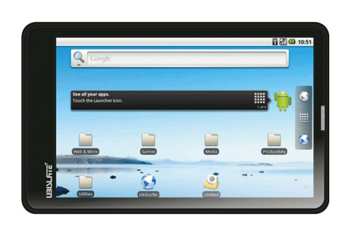
While the device will not impress Indians with high-end laptops and iPads, the Aakash tablet could be help less affluent Indians connect to the Internet for the first time. At present, just 8 percent of India’s 1.2 billion people have Internet access and one factor preventing it is the availability of low-cost devices. Comparably, 40 percent of Chinese citizens have Internet access.
[aditude-amp id="flyingcarpet" targeting='{"env":"staging","page_type":"article","post_id":338632,"post_type":"story","post_chan":"none","tags":null,"ai":false,"category":"none","all_categories":"business,","session":"C"}']The devices are being produced in India and were designed by DataWind in conjunction with an Indian company, according to a report by Computerworld. The Indian government has contracted to buy some 8 to 10 million of the devices from DataWind by March 2012, the report says, and will initially be giving the devices away to students for free. When local taxes and warrantees are added to the device’s base price of $38, the government will be paying $50 per device, at least until production volumes increase.
“The rich have access to the digital world, the poor and ordinary have been excluded. Aakash will end that digital divide,” Telecoms and Education Minister Kapil Sibal told The Times of India.
AI Weekly
The must-read newsletter for AI and Big Data industry written by Khari Johnson, Kyle Wiggers, and Seth Colaner.
Included with VentureBeat Insider and VentureBeat VIP memberships.
The country’s ministry of human resources is involved in this week’s launch and will be giving the devices to 100,000 students at first, according to the ComputerWorld report. In November, the tablet will go on sale commercially. DataWind also plans to sell the devices in other countries in the future, according to the report.
Naturally, the Aakash has limited specs because it is so cheap, but they aren’t that bad. It runs on Android 2.2, features a 7-inch resistive touch screen with 800-x-480-pixel resolution and has a 366-MHz processor, 256MB of RAM, 2GB of internal storage and a microSD slot to add more storage. It also has two USB ports for connecting accessories and a 3.5mm headphone jack for listening to music.
The Aakash also includes a 2100 mAh battery that can last for up to 3 hours. It will have some pre-loaded applications, but unfortunately it won’t have access to the Android Market for downloading more apps.
Do you think devices like the Aakash will help spread the Internet and computer access to India?
VentureBeat's mission is to be a digital town square for technical decision-makers to gain knowledge about transformative enterprise technology and transact. Learn More